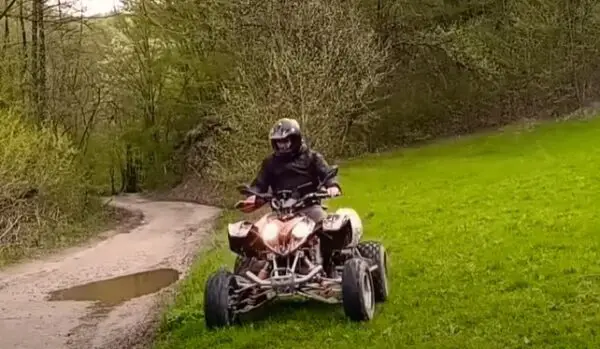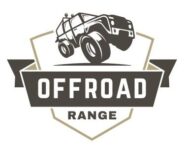The Polaris Predator 500 is a popular ATV due to its powerful engine and aggressive styling. But like all ATVs, it can have its share of problems.
In this article, I will discuss common Problems associated with the Polaris Predator 500 and give you solutions to these problems.
I will also give you a few tips on how you can prevent these problems from occurring in the first place.
So read on to learn more about the problems of Polaris Predator 500.
Polaris Predator 500 Problems

1. Transmission Problem
One of the most common problems with a Polaris Predator 500 is a transmission problem.
You will face this problem due to a lack of proper maintenance or damage to the internal components in the transmission system.
Some signs that there may be a transmission issue include grinding gears, hesitation when shifting, and difficulty getting into gear.
If any of these symptoms are present in your ATV, it is important for you to have the vehicle serviced immediately.
During the inspection, all of the internal components should be checked for wear and damage.
If any parts are found to be damaged or worn, they should be replaced with new ones. Also, if transmission fluid levels are low, they should also be topped off.
2. Fuel Pump Problem
Another common problem that owners of Polaris Predator 500 experienced is a fuel pump problem.
When the fuel pump is malfunctioning, it can lead to engine stalling or failure to start. This occurs because the fuel pump is not delivering enough fuel to the engine for it to ignite.
Also, the engine may struggle to idle, with it lurching from low speeds up to higher speeds and then back down again. This is due to inconsistent fuel delivery from the faulty fuel pump.
Another symptom of defective fuel pumps is misfiring in the engine. This happens because there is not sufficient fuel being supplied by the pump.
Reduced power and slower acceleration are both signs that something is wrong with the fuel pump in your vehicle.
In order to fix this problem correctly, it is best that you seek professional help from a qualified technician.
Because fuel pumps can be difficult components to replace.
3. Starter Problem
The starter problem with this ATV is also a common issue that can be frustrating for riders. The most common reason for this problem is a weak battery.
If the starter responds weakly or not at all when the spark plug is in, then it’s likely that the battery needs to be replaced.
This is how you can replace the battery of your ATV.
- First, remove the negative cable from the battery terminal.
- Then disconnect all the wires connected to the starter.
- Unscrew the bolts that hold the starter in place before pulling out the old unit.
- After installing, properly connect all cables and ensure everything is in good condition.
However, even if the battery is functioning properly, it may still be necessary for you to replace the starter.
The starter motor could be malfunctioning due to age, dirt, or debris buildup inside.
Also, wiring leading to and from the starter could have become loose or corroded over time and need repair or replacement.
4. Electrical Problem
The electrical problem with the Predator 500 is also a frustrating issue. The most common symptom is that when the key is turned on, the neutral light does not come on.
To troubleshoot this issue, you should check all grounds and connections in the electrical system.
This includes examining the red/black and white/red wires coming from the left handlebar controls. Oftentimes, these wires are responsible for powering the neutral light when engaged.
If these wires are found to be intact, then it may be time to examine the ignition switch for any potential problems such as poor connections or loose wiring.
Also, it may be beneficial to inspect those black bags for any signs of damage or corrosion that could be disrupting power to the neutral light circuit.
If all else fails with attempting to power up the neutral light, you should consider bypassing the system altogether by connecting a jumper cable between the two aforementioned wires while engaging the starter button.
This method will start and run your ATV engine without needing a working neutral light circuit.
But you should only do this as a last resort once other methods have been exhausted.
5. Spark Problem
The common problem of having no spark is another concerning issue for owners. You can have this problem due to faulty wiring and a damaged CDI box.
While fixing this problem, you should first check all wiring connections and grounds between the handlebar controls and the CDI box area.
If you didn’t find any issue there. The next step would be to inspect the CDI box itself since it is an integral part of the ignition process.
Specifically, you should look for signs of damage such as corrosion, melted wires, or blackened components.
Also, it is possible that one of the critical components within the box may have failed, preventing the spark that is necessary for combustion in the engine cylinder.
If a visual inspection of both the wiring and CDI box have been done and you have discovered nothing to explain why there is no spark.
Then you should further investigate such as testing individual components or replacing them as needed.
6. Replacement Parts Difficult to Find
The most frustrating problem with the Predator 500 is that replacement parts can be difficult to find.
Finding the original parts for this ATV is not as easy as finding them for newer models. Many retailers will not stock these older parts, and if they do it may only be in small numbers.
Even when ordering from a reliable supplier, there could still be delays in getting your part as more time may need to be taken for searching through their inventory.
It’s also possible that the part you need has been discontinued by the manufacturer, which means it’s no longer being produced.
Some owners have gone as far as having custom replacements made so they don’t have to source used parts.
This can however come at a higher cost than finding an OEM part.
Is the Polaris Predator 500 a Good Quad?
The Polaris Predator 500 is a great ATV for those looking for speed and power in an ATV.
Its lightweight design makes it easy to handle, which is ideal for off-roading.
The engine offers plenty of torque and the suspension system ensures comfortable riding even on rough terrain.
The Predator 500 also provides excellent fuel efficiency with its liquid-cooled single-cylinder engine.
For off-road lovers, this is a reliable and good quad.
Polaris Predator 500 Maintenance Tips
Regular Inspection and Service
- Routine Check-ups: You should schedule regular check-ups, ideally every few months or after a certain number of miles. This allows for early detection of possible issues.
- Professional Service: While DIY methods are cost-effective, getting your ATV serviced by professionals ensures it’s in optimal condition, especially before long trips or challenging rides.
Lubrication and Fluids
- Engine Oil: Change the engine oil and filter based on the manufacturer’s recommendations. Fresh oil keeps the engine running smoothly and extends its life.
- Transmission Fluid: Regularly inspect the color and level. Replace it if it appears dirty or is below the recommended level.
- Brake Fluid: Check the brake fluid reservoir regularly and top up with the recommended fluid type when necessary.
Tires and Brakes
- Tire Pressure: Routinely check the tire pressure. Correct tire pressure ensures better traction and reduces the risk of accidents.
- Tire Tread: Inspect the tread depth to ensure there’s adequate grip. Replace tires if the tread is worn out or if there are visible damages.
- Brake Inspection: Check brake pads and discs. If they show excessive wear, it’s time to replace them.
Cleaning and Storage
- Washing: Clean your ATV after every off-road trip to prevent dirt, mud, and debris from causing damage. Avoid direct water jet on electronic parts.
- Storage: When not in use, especially in off-seasons, store your Polaris Predator 500 in a dry place, preferably covered to protect it from weather elements.
- Battery Care: If the ATV won’t be used for a prolonged period, disconnect and charge the battery to prolong its lifespan.
Genuine Parts and Accessories
- Quality over Price: While it might be tempting to go for cheaper parts, investing in genuine Polaris parts ensures optimal performance and reduces the likelihood of issues.
- Upgrades: If you’re considering any upgrades or modifications, consult with professionals to ensure they won’t negatively affect the ATV’s performance or safety.
What Users Say About Polaris Predator 500?
Many riders have praised its great power, solid design, and versatility. It’s comfortable to ride for long periods of time and is able to handle difficult terrain with ease.
Many owners also commend the machine for being easy to work on and maintain.
Its overall performance was deemed impressive in all areas by many riders, who found it reliable, efficient, and enjoyable to ride.
The Predator 500 is an excellent choice for those looking for a quality ATV that can go anywhere and do anything.
These are the reviews of owners who used this ATV.
“Extremely happy with my recent 2022 Predator 500 purchase for guests and my wife to ride on the property! Another great addition to my lineup at the ranch! Moving 100% to the Polaris brand !” Butler George
“So for light duty riding and tree work as I am still breaking in but love everything about it so far.” Laramie Wyoming
“I have had my 2021 Predator 500 for not quite a year. It has performed well while riding (I will never get another ATV without EPS) and it is a true workhorse when plowing snow. I applaud Polaris for adding a battery tender port. This is a great bike that has all you need for work and plays.” Sullivan MO
Technical Specifications of the Polaris Predator 500:
| Technical Specifications | Polaris Predator 500 |
|---|---|
| Engine Type | 499cc, 4-stroke, single-cylinder |
| Cooling System | Liquid-cooled |
| Fuel Delivery System | Carburetor |
| Starting System | Electric |
| Transmission | Manual |
| Gearbox | 5-speed |
| Drive System | Chain |
| Front Suspension | Dual A-arm with 10 inches (25.4 cm) of travel |
| Rear Suspension | Mono-shock with 11 inches (27.9 cm) of travel |
| Front Brakes | Dual hydraulic disc |
| Rear Brakes | Hydraulic disc |
| Front Tires | 21 x 7-10 |
| Rear Tires | 20 x 11-9 |
| Length | 73 inches (185.4 cm) |
| Width | 47 inches (119.4 cm) |
| Height | 45 inches (114.3 cm) |
| Wheelbase | 50.5 inches (128.3 cm) |
| Ground Clearance | 4.5 inches (11.4 cm) |
| Fuel Capacity | 3.3 gallons (12.5 liters) |
| Dry Weight | 415 lbs (188 kg) |
| Colors | Red, Black |
Conclusion
The Polaris Predator 500 is a great ATV for off-roading. However, like any other ATV, it can be prone to certain problems that may require your attention from time to time.
These are the common problems with this ATV.
- Transmission Problem
- Fuel Pump Problem
- Starter Problem
- Electrical Problem
- Spark Problem
- Difficulty in Finding Replacement Parts
To ensure you get the most out of your ride with minimal problems, make sure to take good care of it by performing regular maintenance and repairs.
Please take a moment to share your story in the comments section below so that other riders like yourself can benefit from your experiences!
Arctic Cat Alterra 700 Problems
Polaris Sportsman 550 Problems


